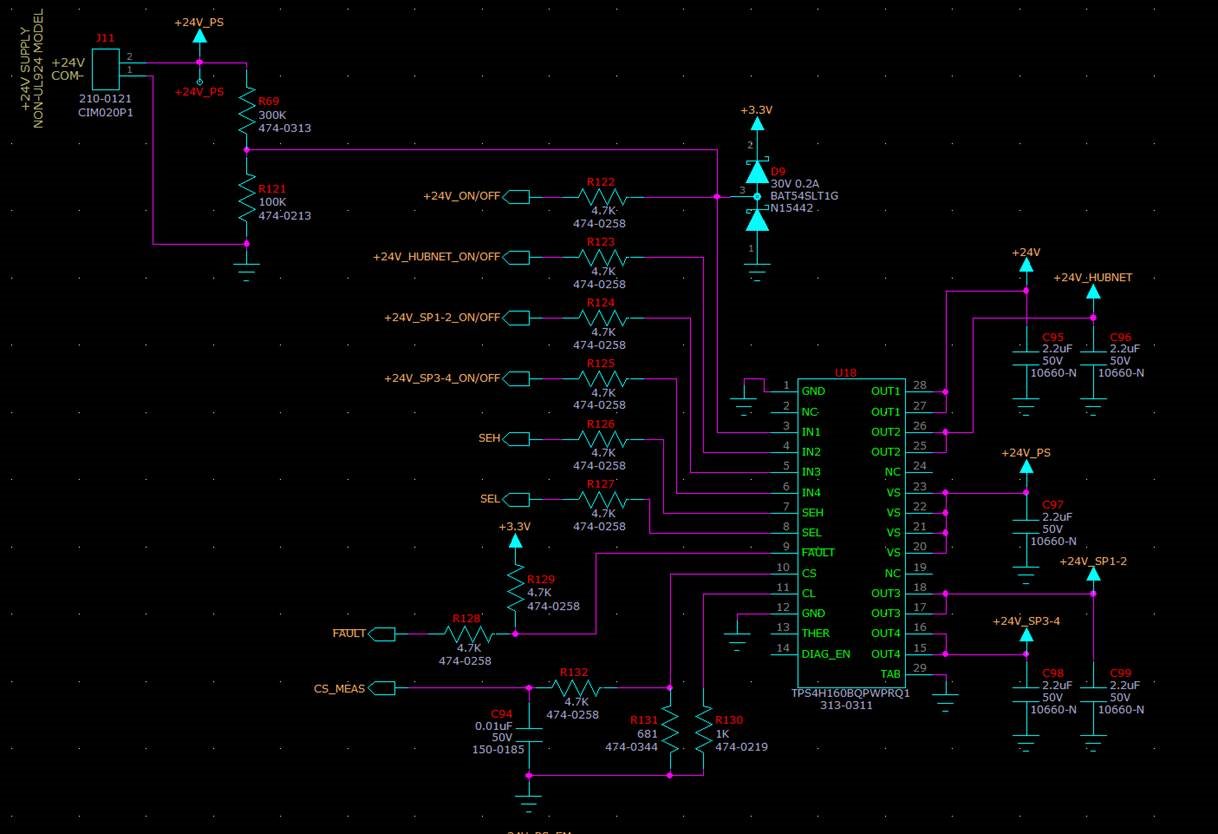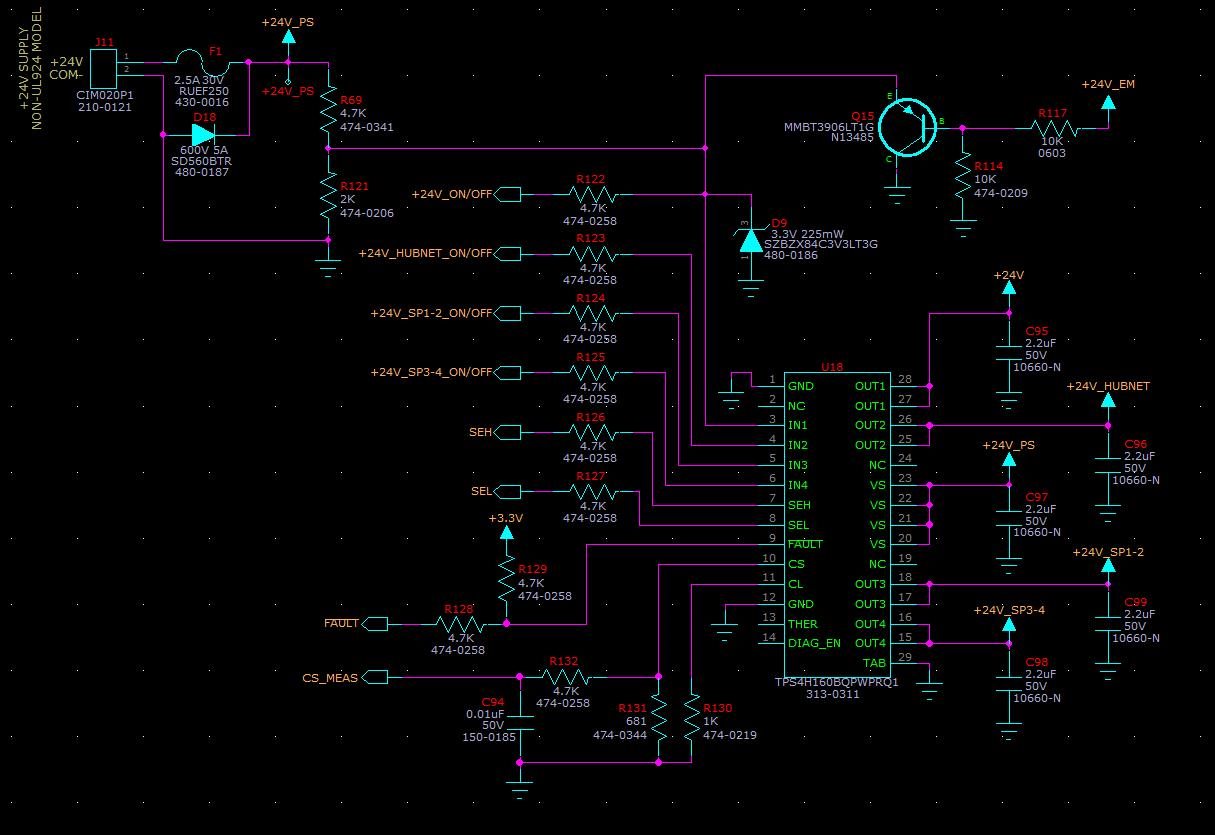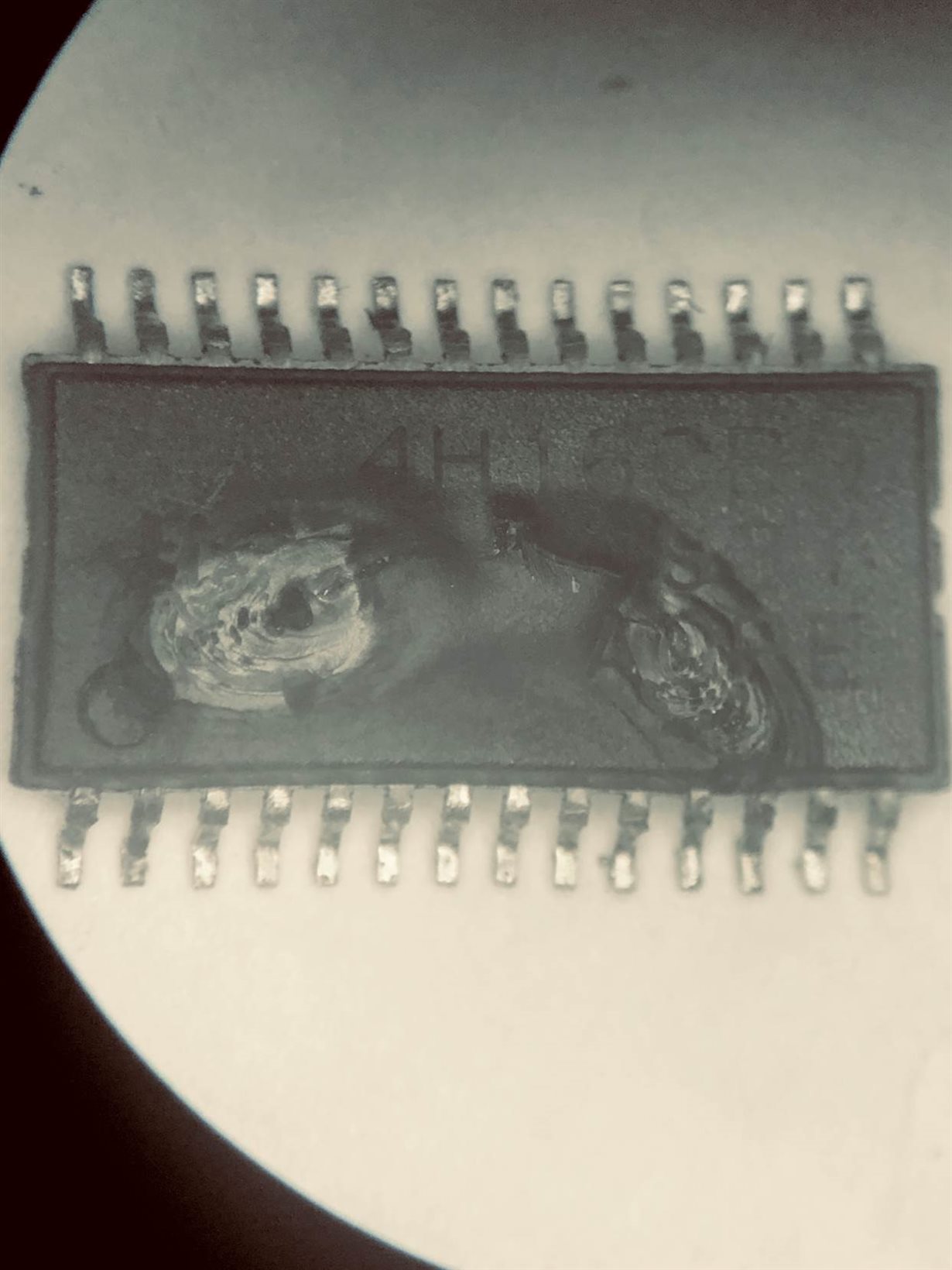Hi team,
my customer is seeing failure issues trying to interface the device with the input power supply under the described condition below. please continue discussion with the customer here towards a solution.
"We are using the part to enable power to different circuits. The first thing that happens is the input power enables the processor circuit that controls the rest of the loads. figure 1 shows the original schematic unchanged, We found that the diodes D9 was a problem it fed the 3.3V rail and loaded down the sense line so the switch was never enabled.
To fix this issue temporarily we removed D9 and for a more permanent fix we changed to the schematic represented in figure 2.
Currently the boards we are testing with are the units based on the first schematic in figure 1 with D9 removed. When the 24V AC to DC supply is powered up on the AC side with the 24V out-put connected to the circuit everything operates fine. If the AC to DC supply is powered with the 24V out-put not connected to the circuit damage will occur to the switch when the supply is connected and the 24V is already present. The AC to DC supply is maintaining regulation at 24V unloaded.
I suspect that without the over voltage protection on pin 3 there is a chance that a larger than recommended voltage would be applied and could be the issue. I am waiting for samples to test I am still interested in knowing your opinion and if this should be happening. Also I attached a picture of one of the damaged parts at the bottom of the email."
Figure 1:
Figure 2:
Figure 3:
Thanks,
Kevin




